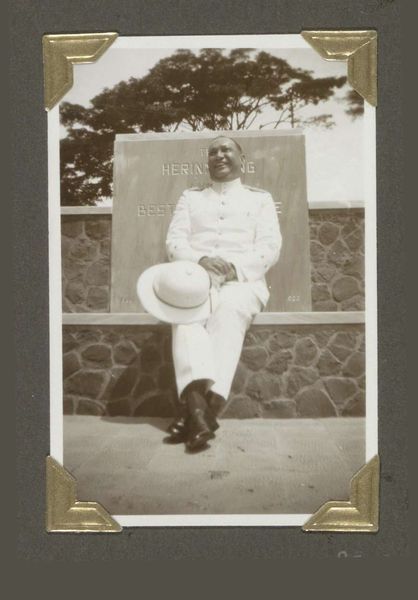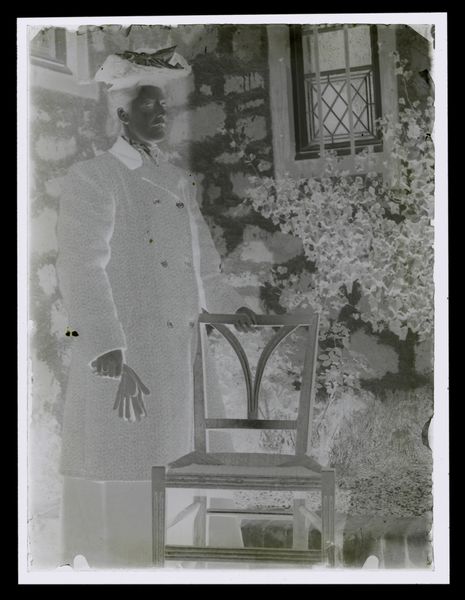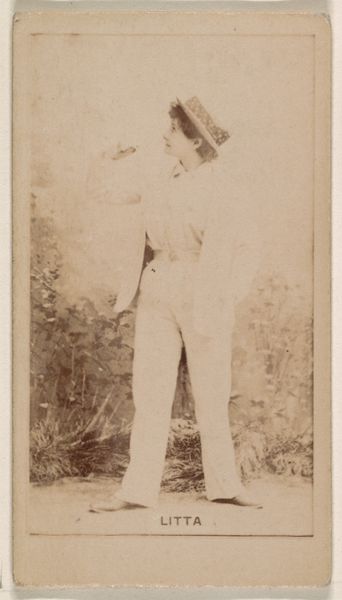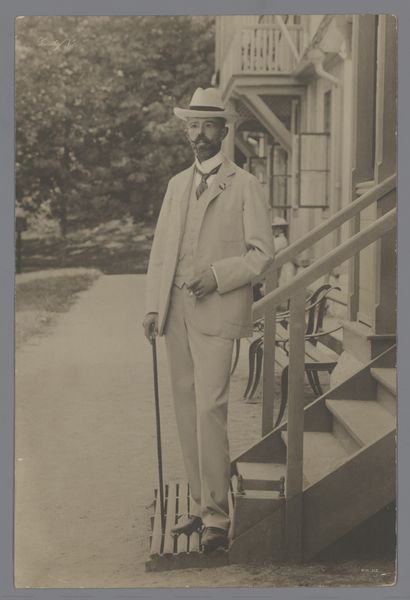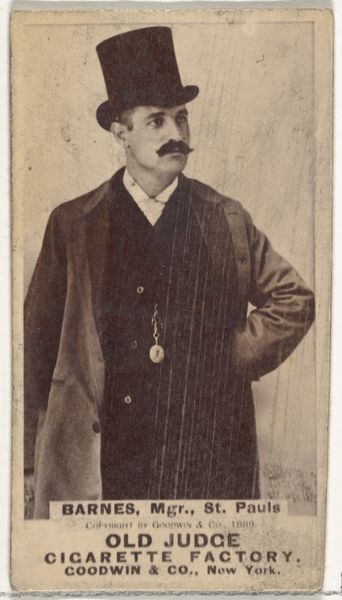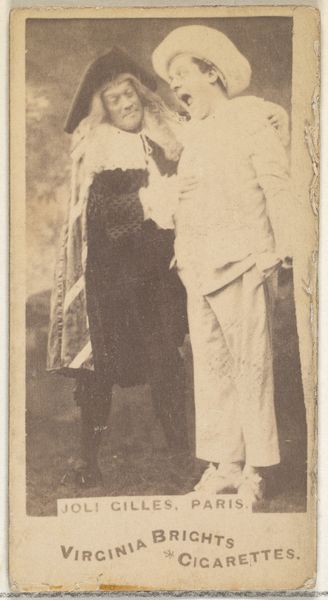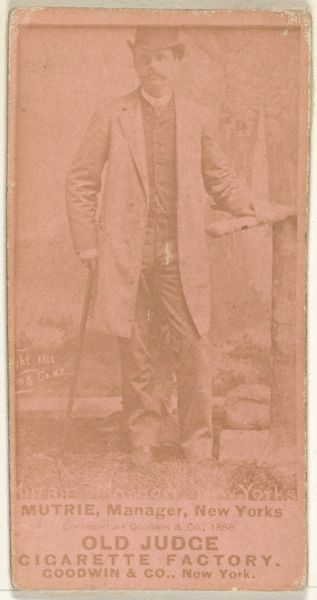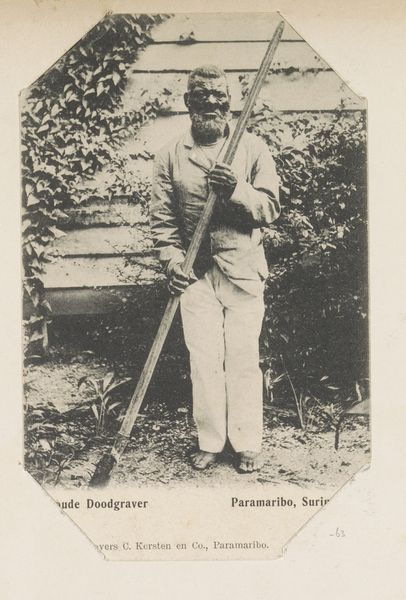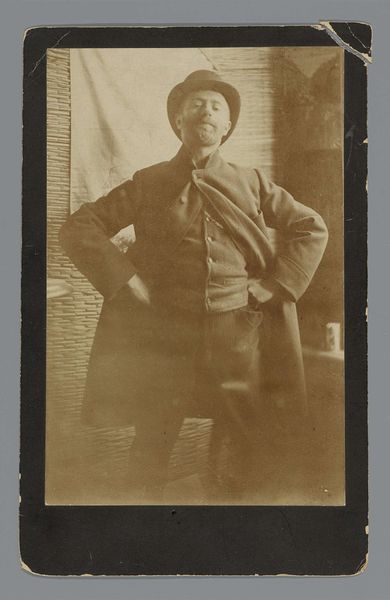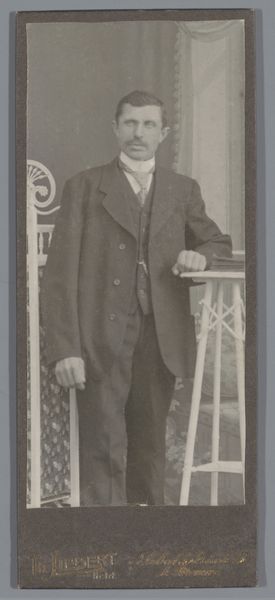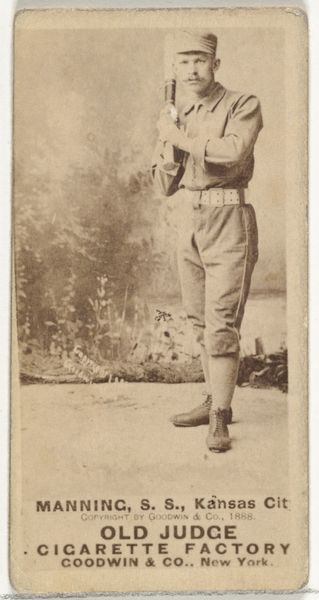
Portret van hoofdonderwijzer en amateurfotograaf Paul A.W. de Hart met fiets in Paramaribo c. 1910
0:00
0:00
photography
#
portrait
#
photography
#
historical photography
Dimensions: height 96 mm, width 67 mm
Copyright: Rijks Museum: Open Domain
Editor: So here we have a vintage photograph from around 1910. It's a portrait of Paul A.W. de Hart, who was a head teacher and amateur photographer, posing with his bicycle in Paramaribo. It strikes me as a very composed and formal portrait. What can you tell me about it? Curator: This photograph invites us to consider several layers of identity and representation. De Hart, a Black educator and photographer, is consciously constructing his own image in a colonial context. His crisp white suit, the bicycle, all speak to modernity and status, but also perhaps to assimilation. How do you think his roles as both subject and creator impact our reading of this image? Editor: That’s a great point about the colonial context. I hadn’t thought about it in terms of self-representation and control. So the fact that he’s not just a subject but also a photographer… Curator: Exactly! He is actively participating in the visual narrative. What choices is he making, and what do they tell us about his understanding of his place in society and the gaze of the colonizer? The bicycle itself is interesting, linking him to mobility and progress but also possibly reflecting colonial infrastructure. Editor: It does make me wonder who he was trying to reach with this image, both within his community and beyond it. There's this real sense of upward mobility, I guess you could say. Curator: Considering his position as an educator, might he be presenting a particular vision of possibility and advancement for his students? What aspirational message is he trying to convey through this portrait? Editor: I hadn’t considered that! Looking at the picture again, his careful posture makes so much more sense in that light. Thanks. Curator: Indeed! It's a rich visual text when read through the lenses of history, race, and the politics of representation. Always consider who is behind the camera, and what power dynamics are at play.
Comments
No comments
Be the first to comment and join the conversation on the ultimate creative platform.

